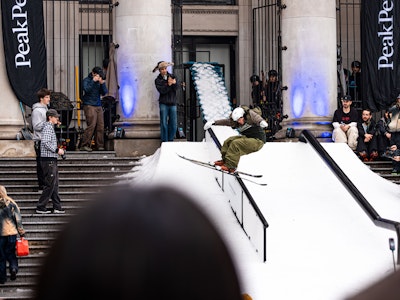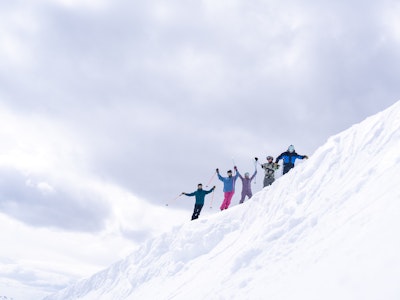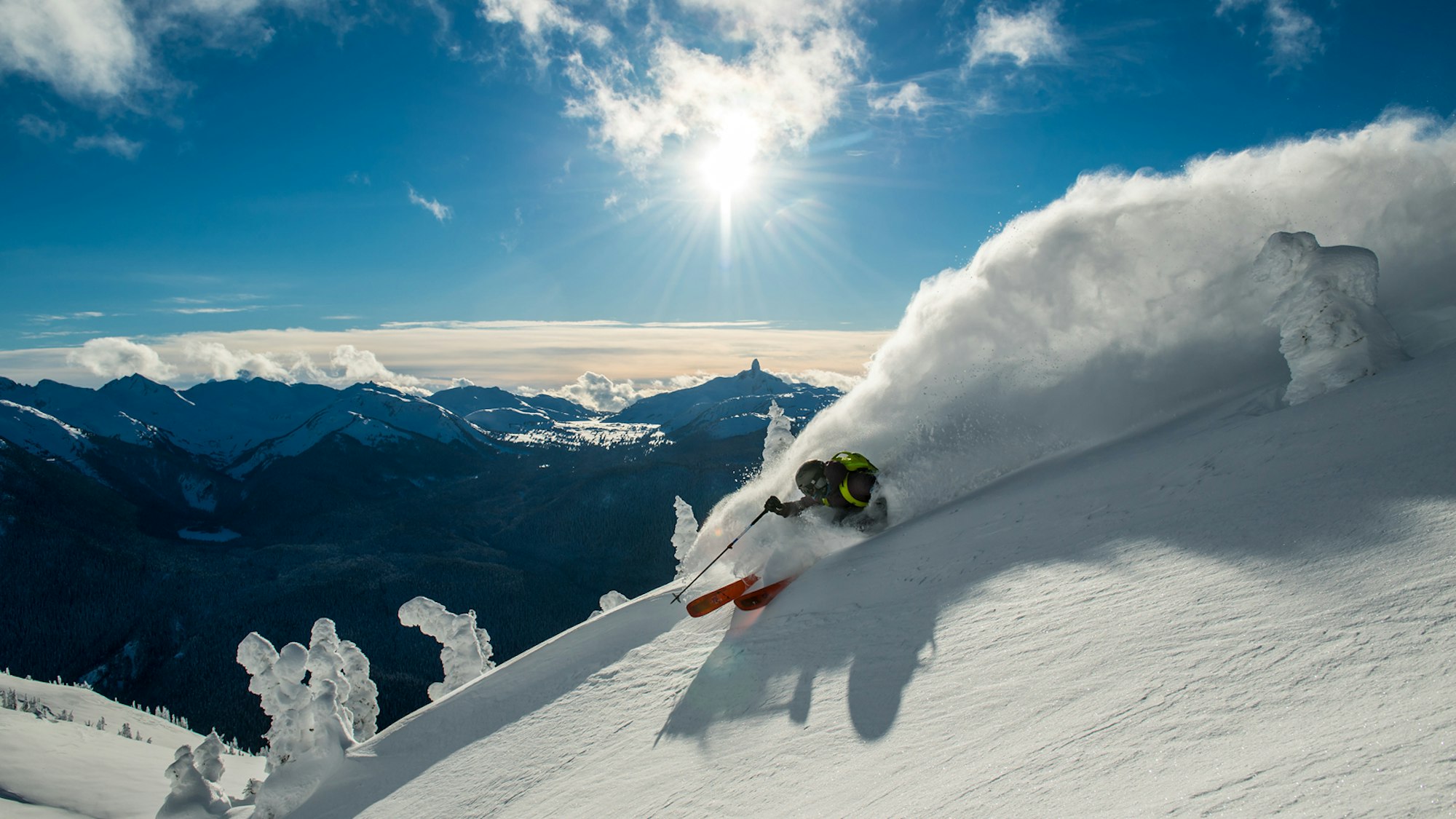For nearly a decade, Vail Resorts’ Epic Pass has provided insane skiing bang for your buck. With the addition of new resorts and pass holder benefits the pass gets better, seemingly with each passing year. And frankly, the 2017-18 enhancements put this year’s Epic Pass lightyears ahead of its predecessors. The Epic Pass now includes unlimited access to what has consistently been ranked the number-one ski resort in North America: Whistler Blackcomb. In addition, Stowe Mountain Resort becomes the first East Coast resort to join the Epic Pass stable. Combine those two new destinations with unlimited, unrestricted access to 13 other world-class resorts for just $899 (November 19, 2017 deadline to get the pass), not to mention limited access to the ski slopes of 30 additional global partners, and you’ve got a deal that’s mighty difficult to pass up.
The Epic Pass’ price, number of mountains and perks are enough to set it apart from any other ski pass on the market, yet it’s the connected experience of its mountains that Vail Resorts hangs its hat on. The unmatched guest experience that a large multi-resort family of mountains can provide is unique to Vail Resorts.
Beyond offering unparalleled access to 15 major ski areas, Vail Resorts has worked hard to take the pass holder experience to new heights. The award-winning EpicMix app tracks all your stats from the hill, provides lift line times, houses your photos shot by on-mountain photographers and gives access to critical info like trail maps and snow conditions. Each Epic Pass also comes loaded with six Ski-With-A-Friend tickets allowing you to bring along non-pass holders at a deep discount from the ticket window price. All pass holders are automatically enrolled in the Epic Pass Club, which provides additional discounts on dining, lodging, ski tunes, rentals and more.
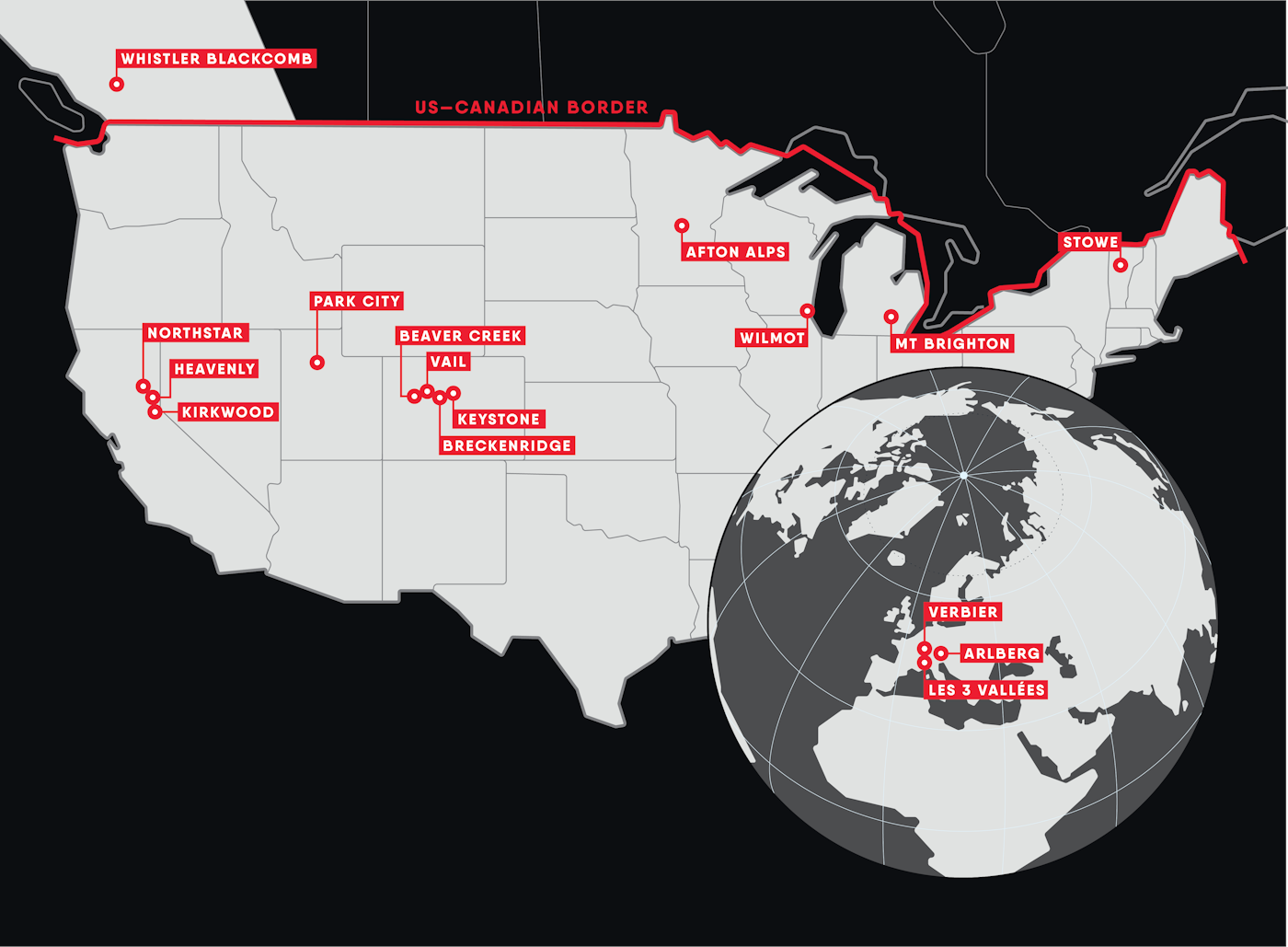
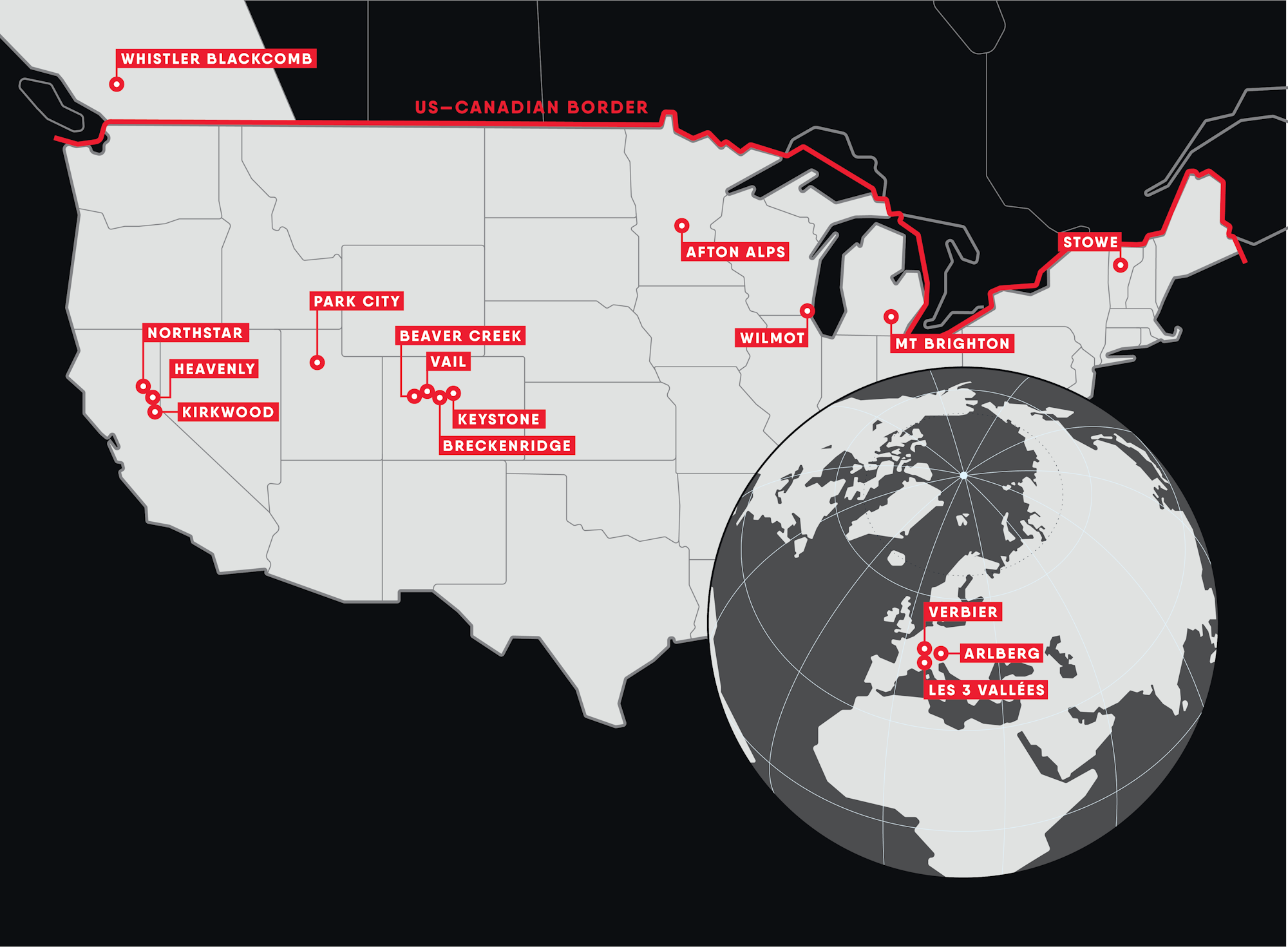
While an Epic Pass already includes unlimited access to international resorts like Whistler Blackcomb in Canada and Perisher in Australia, it also brings the stoke to 30 European partner resorts across France, Switzerland, Austria and Italy. The European skiing is not unlimited, but every Epic Pass includes days at legendary resorts like St. Anton, Verbier, Courchevel and Val D’Isere. Below, check out the best each of the key resorts on the pass has to offer.
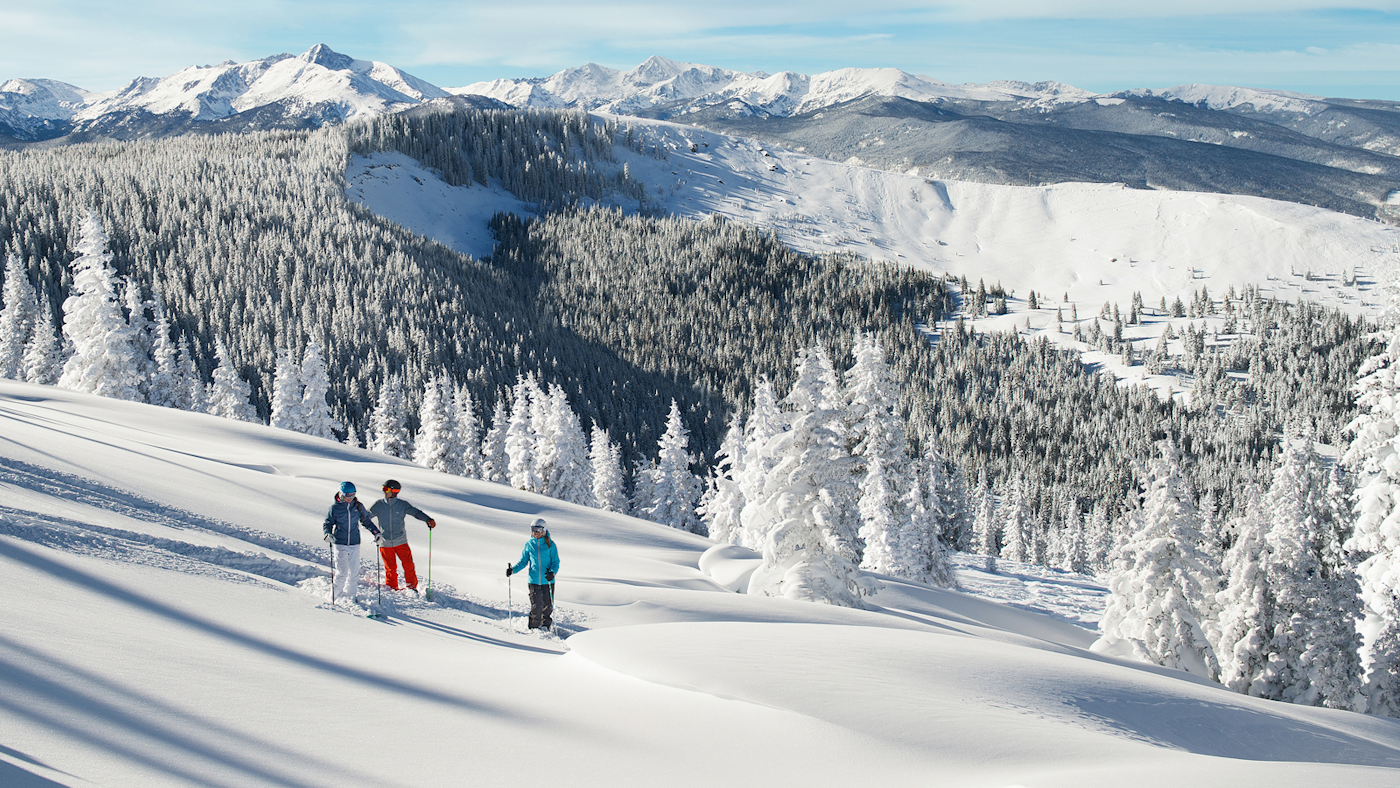
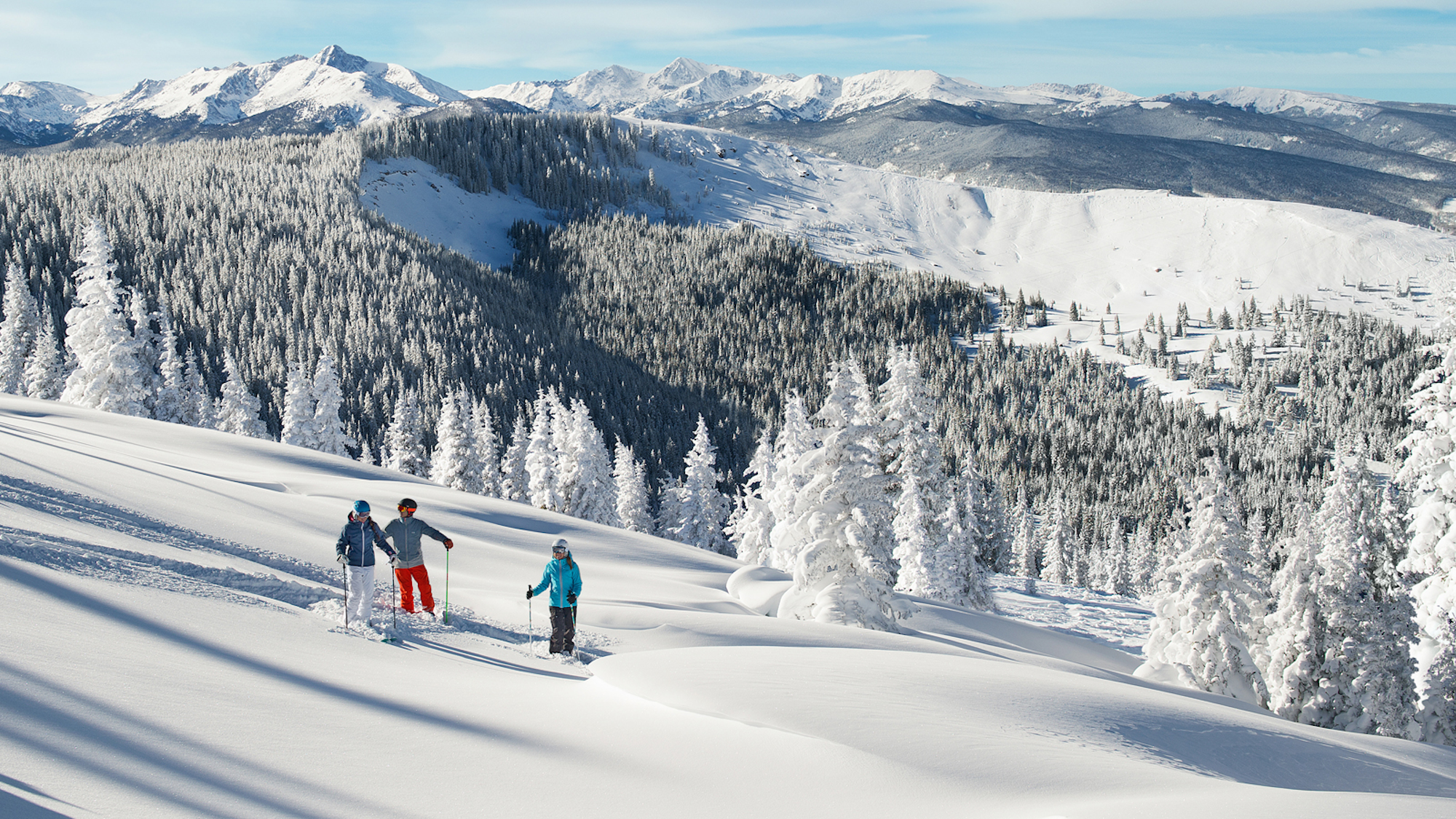
Some of the best terrain at Vail is in Blue Sky Basin and the back bowls. Photo by Jack Affleck.
Vail
The longtime crown jewel of the Epic Pass is Vail. A European-style pedestrian village that paves the way to Vail’s famed frontside steeps and back bowls. The largest resort in Colorado is a popular destination, yet skiers can spread out across Vail’s 5,289 skiable acres to enjoy an average of 370 inches of snowfall each year.
While the luxury of Vail Village spills into Gondola One, outfitted with heated seats and Wi-Fi, the terrain that follows offers plenty of technical descents for even the most-seasoned shredder. Some of the best terrain on Vail’s frontside can be found off of the Northwoods Express chair, where a combination of glades, cliffs, bumps and steep groomers will satiate any skiers’ appetite.
When your frontside fix has been had, hit Red Square or Rasputin’s Revenge in Siberia Bowl on your way to Blue Sky Basin, which feels worlds away from the town of Vail. Once there, check out the trees between Heavy Metal and The Divide. For those looking for a bit of airtime, drop into Lover’s Leap or Steep & Deep.
After a long day exploring Vail’s expansive terrain, the Red Lion is the quintessential après spot in the village. Vendetta’s is the best spot for a slice and some suds, and its party often lasts deep into the night. If you end the day in Lionshead Village, post up at Garfinkel’s (the strawberry habanero wings are must-have).
Beaver Creek
A quick drive west from Vail deposits you at Beaver Creek. Don’t let the warm cookies (given out in the base village at the end of each day) and family vibe fool you—this mountain has plenty of terrain to challenge you with shorter lift lines than nearly any other resort off of Colorado’s I-70.
With 3,340 vertical feet and over 300 inches of snowfall a year, Beaver Creek is top-notch all winter long. Check out the famed Birds of Prey to turn it up to 11 on the same run that Olympic ski racers compete on every December. For some serious steeps, pop into Stone Creek Chutes—a partially gladed series of gullies with pitches of up to 45 degrees.
After a day of ripping and a fresh-baked cookie in the village, the Dusty Boot will suit pub-goers looking for nachos and wings, while upscale establishments like Toscanini and SaddleRidge provide a more luxurious dining environment. For a truly unique mountain dining experience, skiers can make reservations at Beano’s and Zach’s Cabins, only accessible via a twenty-minute open-air sleigh ride up the slopes of Beaver Creek.
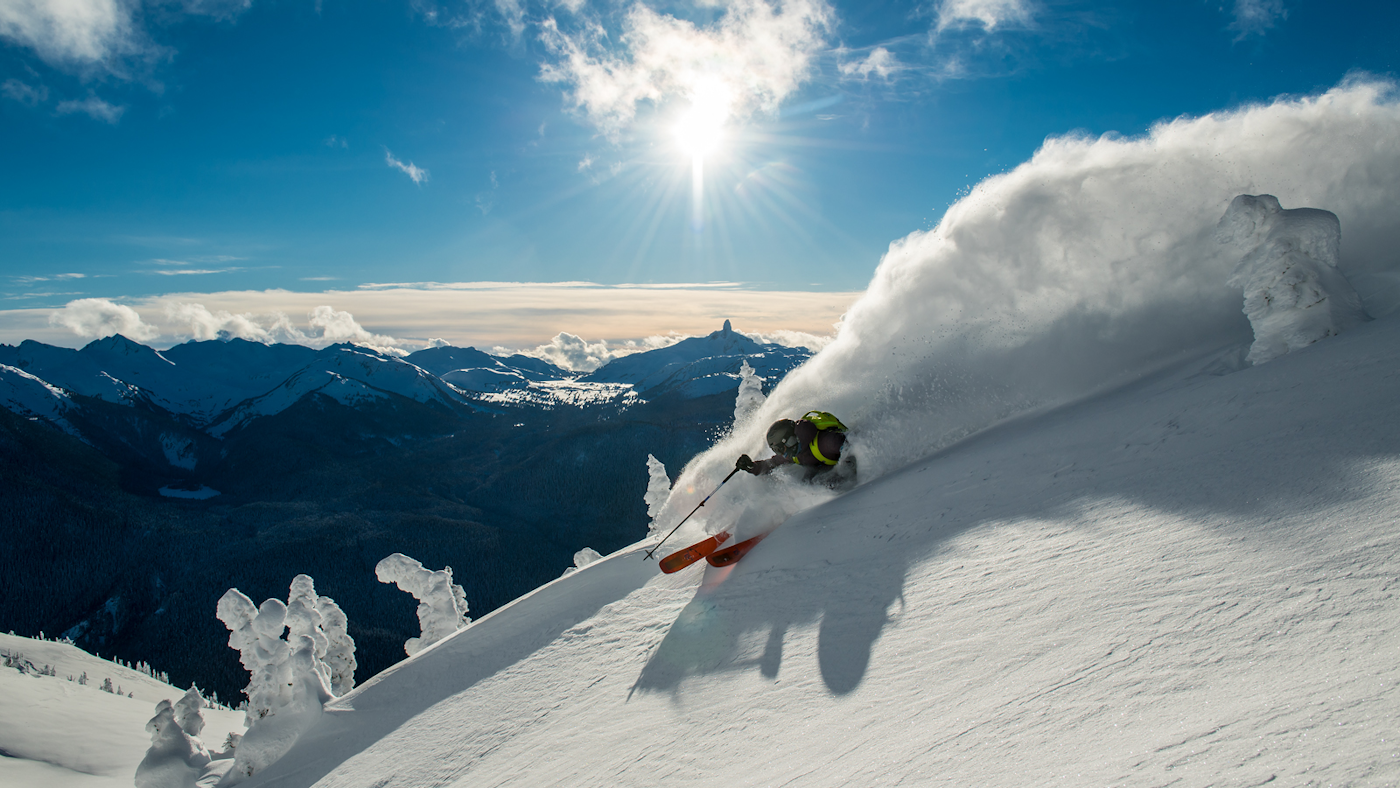
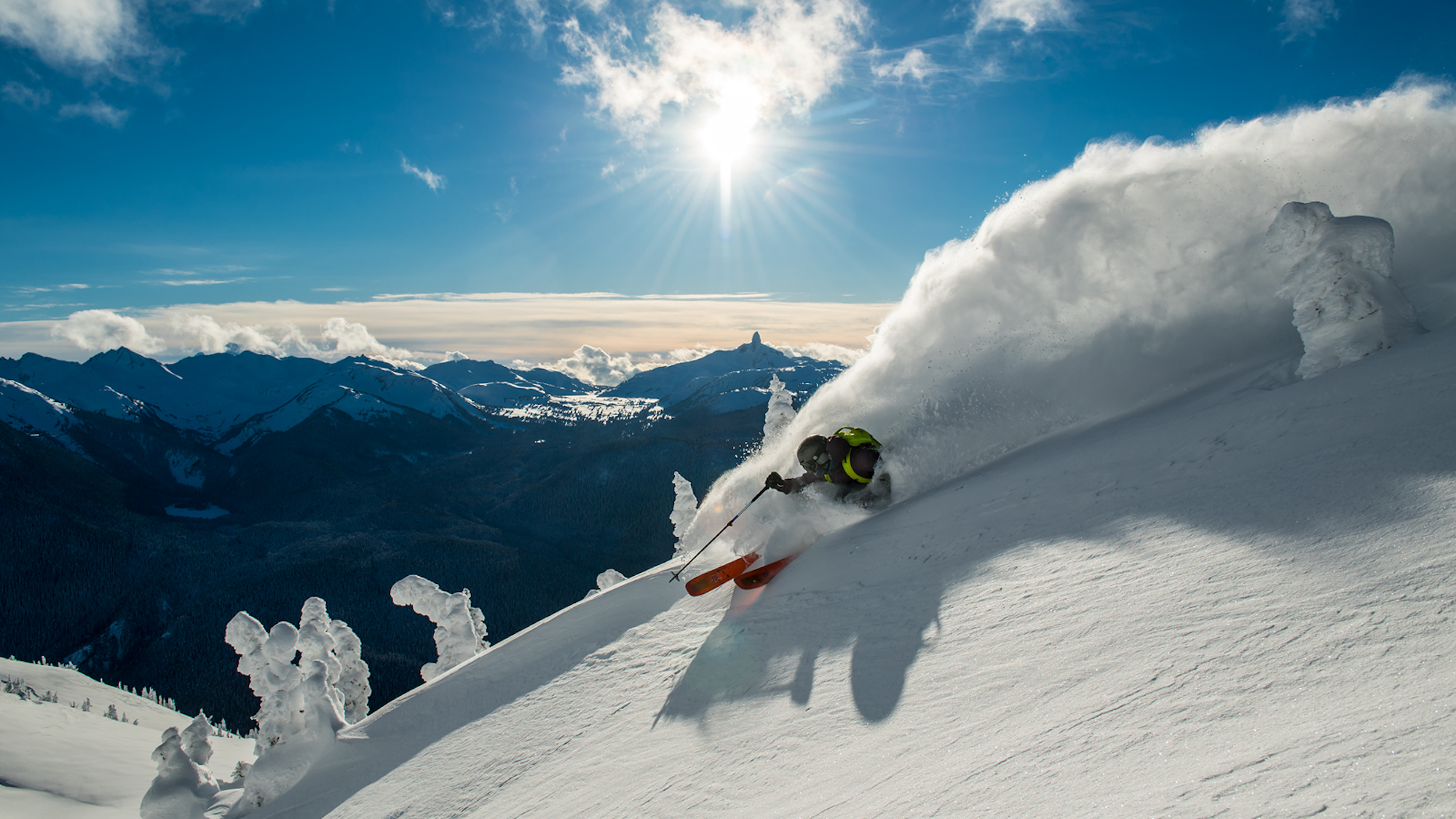
With over 450 inches of average annual snowfall, Whistler Blackcomb is a safe bet for some serious face shots. Photo by Eric Berger.
Whistler Blackcomb—NEW for 2017-2018
There’s a reason why pros like Sean Pettit, Mike Douglas, Kye Petersen, Mark Abma and Eric Hjoleifson call Whistler home. With over 8,000 acres of lift-accessed terrain, a killer village and nearly year-round skiing thanks to the Horstman glacier, many consider Whistler as the top skiing destination in the world.
Whether you’re seeking out chutes, bowls, glades, groomers, parks or pipes, these two mountains connected by the Peak 2 Peak Gondola (world record holder for longest span between ropeway towers and highest point above the ground) will provide your fix.
With over 450 inches of average annual snowfall, Whistler Blackcomb is a safe bet for some serious face shots. On a powder day, get in hot laps on Whistler’s Peak Express for steep chutes, bowls and faces that’ll ignite quite the leg burn. If sheer vert and exposure is what you crave, Spanky’s Ladder on Blackcomb rivals pretty much any inbound steeps you can find. These zones are just the tip of the iceberg, of course, as Whistler Blackcomb’s sheer size allows you to find any type of terrain you may crave.
When it’s all said and done beers at Merlin’s, Garibaldi Lift Co. or the Longhorn are a must. If après doesn’t devolve into a late night, ski boot dance party (or even if it does), world-class dining awaits in the village. Ski town sushi might sound like an oxymoron, but Whistler’s proximity to Vancouver and the Pacific makes for fresh-caught sashimi daily. Do yourself a favor and make a reservation at Sushi Village before your trip—you won’t regret it.
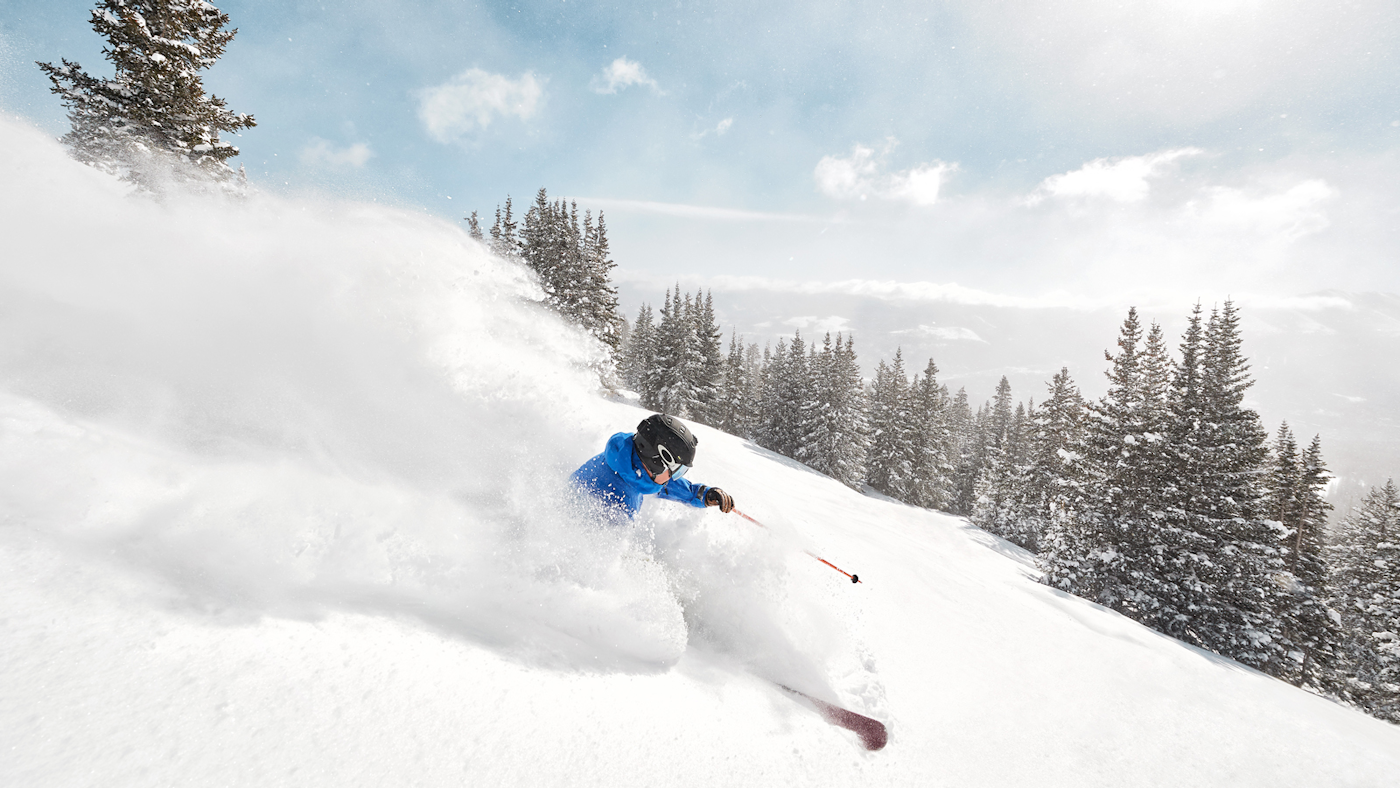
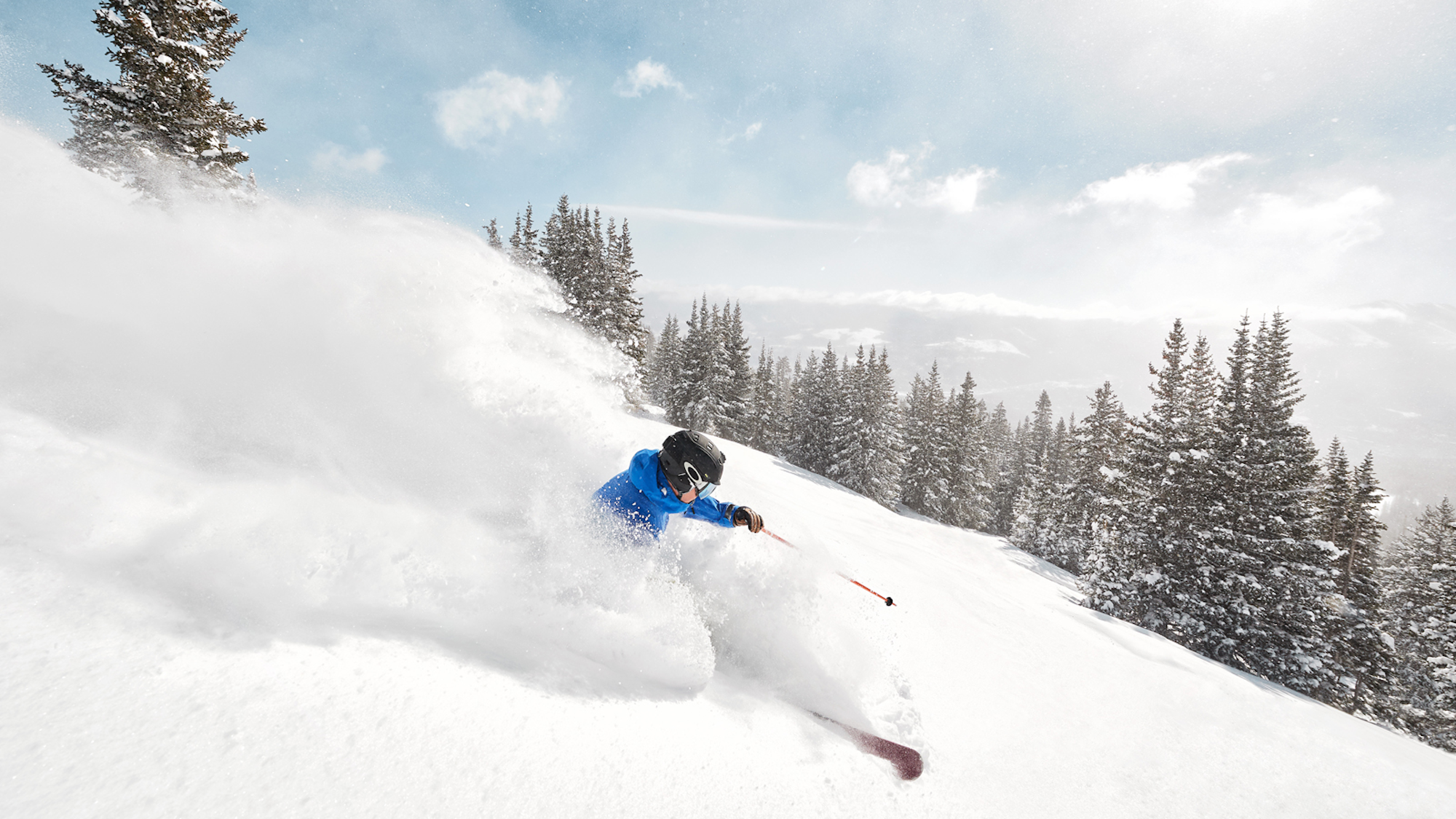
Breck is impressive based on pure statistics: five peaks, 2,908 acres of terrain, 3,398 feet of vert, 34 lifts, 187 trails and 300 inches of average annual snowfall. Photo by Eric Cohen.
Breckenridge
Breckenridge is one of the most-popular ski resorts in the world and for good reason. The former mining village turned ski resort town boasts big-mountain terrain, contest-level terrain parks, unmatched public transportation and incredible nightlife.
At first glance, Breck is impressive based on pure statistics: five peaks, 2,908 acres of terrain, 3,398 feet of vert, 34 lifts, 187 trails and 300 inches of average annual snowfall. Horseshoe Bowl off of the T-Bar makes for soft, steep turns on a powder day. A couple of short hikes offer puckering steeps—The Six Senses off of Peak 6, Lake Chutes on Peak 8 and The Windows near the Peak 9 patrol hut all come to mind.
The TBar is the popular spot for après, where thirsty skiers can take in the high-flying action of the Freeway terrain park from the restaurant’s expansive patio. In town, head to Mi Casa for margaritas; Downstairs at Eric’s for arcade game fun; Empire Burger for juicy handhelds; and Cecilia’s for late (late, late, late) night dance parties.
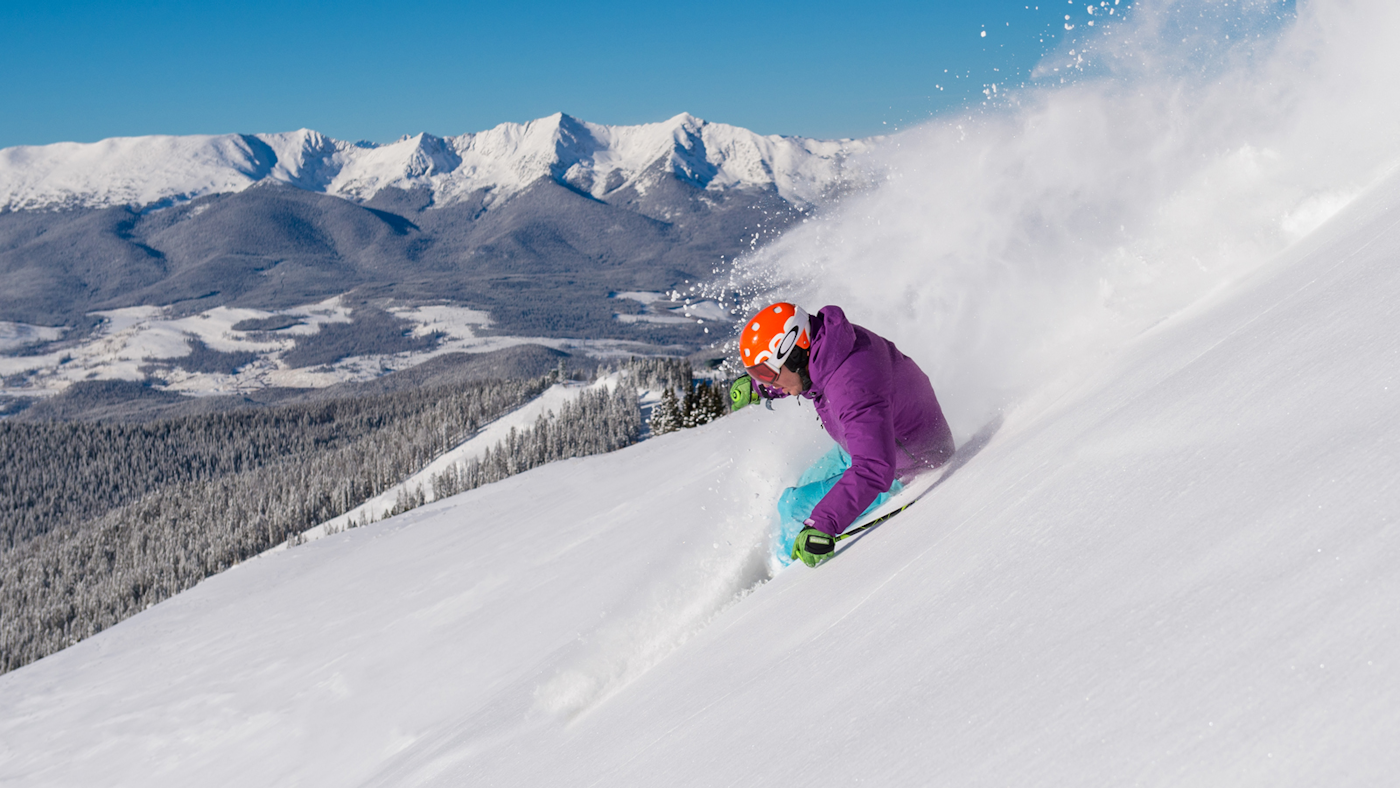
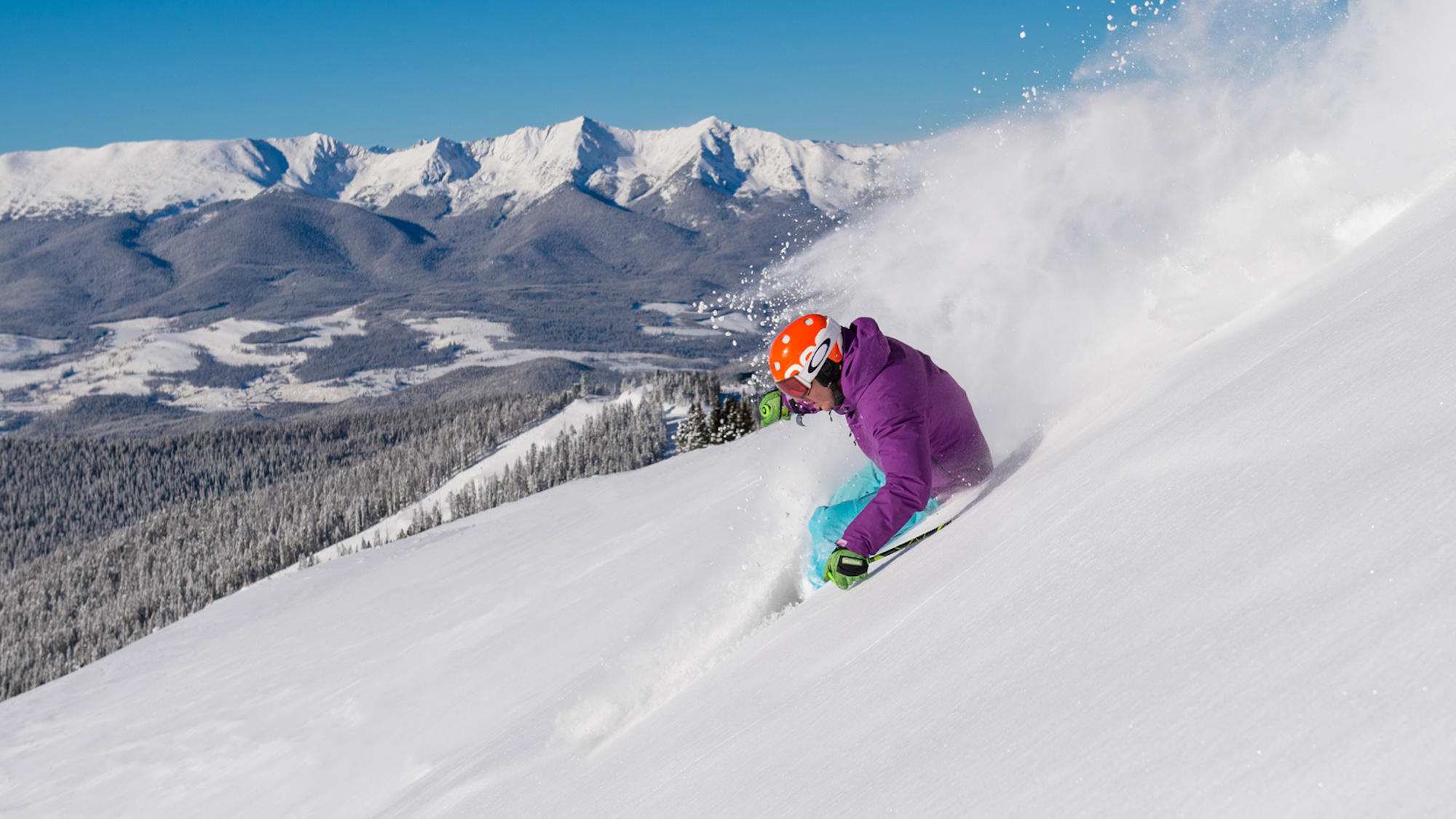
Keystone’s most challenging terrain can be found in The Outback. Photo by Jack Affleck.
Keystone
Just around Lake Dillon from Breckenridge sits Keystone.
Easily accessible from Interstate 70, Keystone boasts 3,148 skiable acres and over 3,100 feet of vert. The most challenging terrain can be found in The Outback. Check out gladed runs like Wolverine and Victory Chutes for well-spaced out trees and a perfect pitch. You can also hike (or take the snowcat shuttle) to access the area’s two expansive bowls. A51 is one of Colorado’s “OG” terrain park zone, with its own lift that provides access to five separate parks. Jibbers, delight. At the end of the day, there are great top to bottom runs like Flying Dutchman and Jackwhacker that will take you back down to the gondola base.
9280 Tap House is the top après spot in the River Run Village when your ski day is done. For Mexican food and great margaritas, check out Dos Locos right off of Route 6.
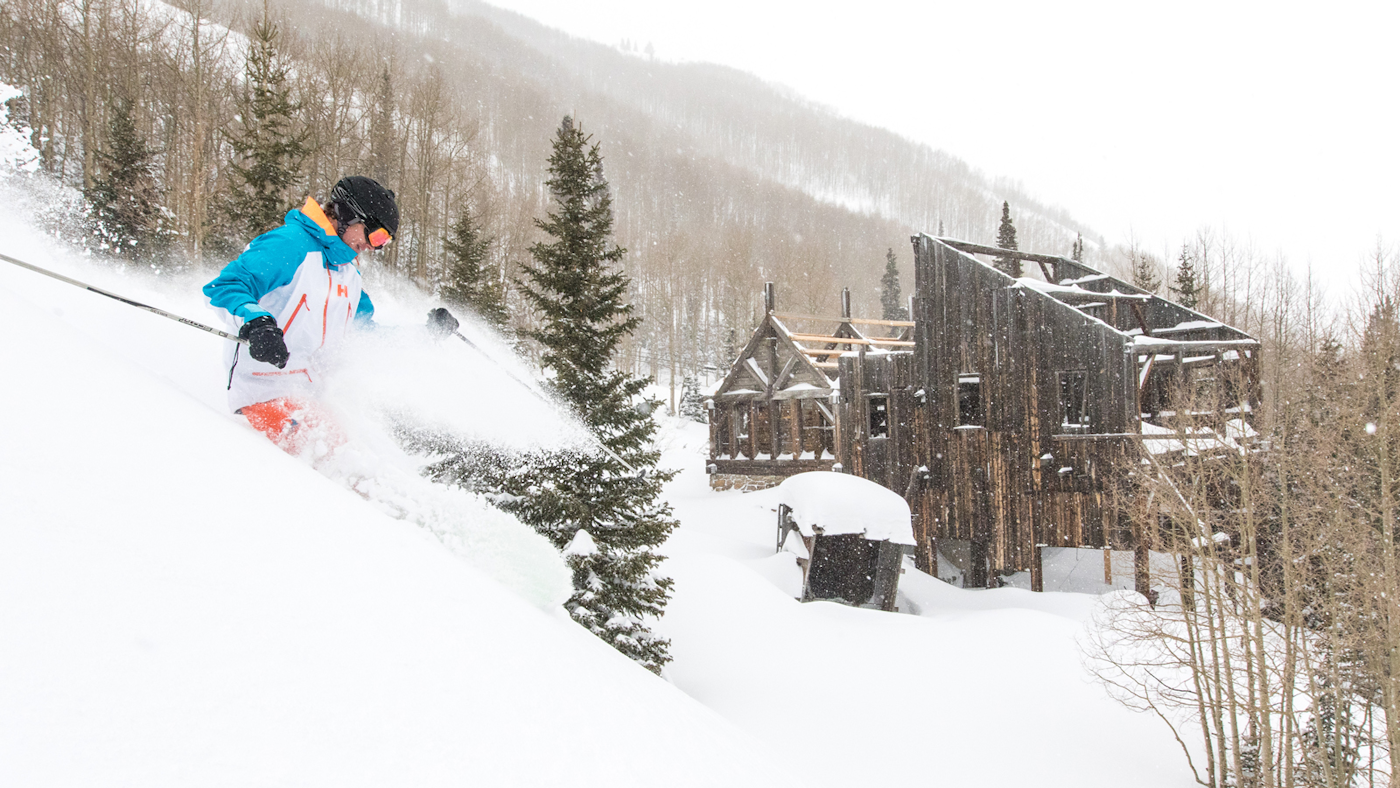
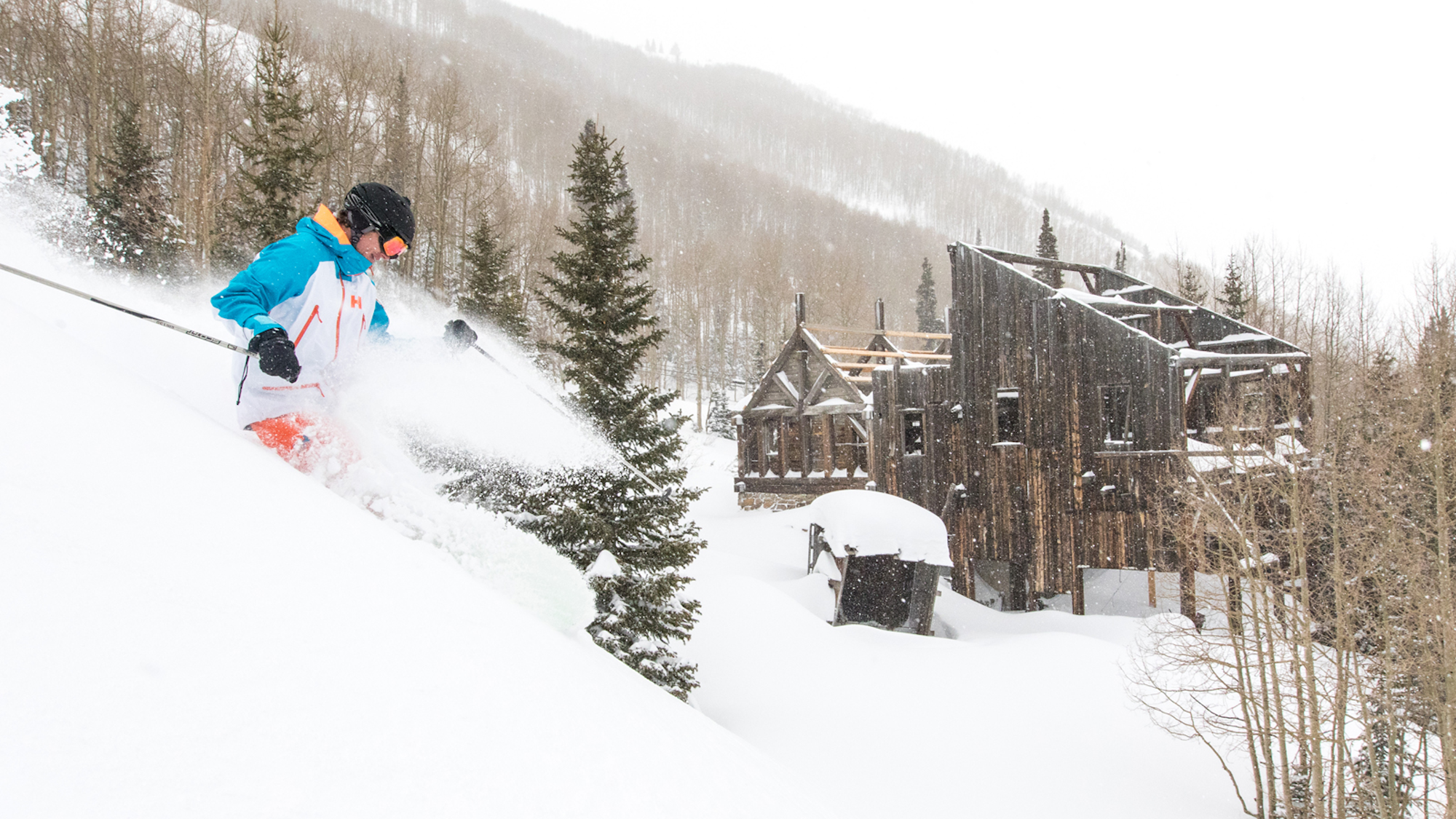
Two world-class resorts—Park City Mountain Resort and Canyons—joined forces to become one a few years ago. Photo by Michael Madsen.
Park City
Two world-class resorts—Park City Mountain Resort and Canyons—joined forces to become one a few years ago. Two distinct base villages and a new gondola joined the two mountains to form the largest lift-served ski area in the United States.
7,300 acres of skiable terrain sits a mere 35-minute drive from Salt Lake International Airport and above the quintessential ski town of Park City. With that much real estate, Park City literally has something for everyone. Jupiter Bowl on the Park City side or Ninety Nine 90 on the Canyons for steeps on a powder day; the King Con Express for cruising groomers; expansive views of Park City from the Town Lift; and the world-class level 3 Kings terrain park.
In town, the High West Distillery, the world’s only ski-in, ski-out distillery, is a must for après. Pair one of their limited release bourbons or ryes with their famous pretzels and beer cheese. For late night pizza and tall boys of PBR, we highly recommend Davanza’s.
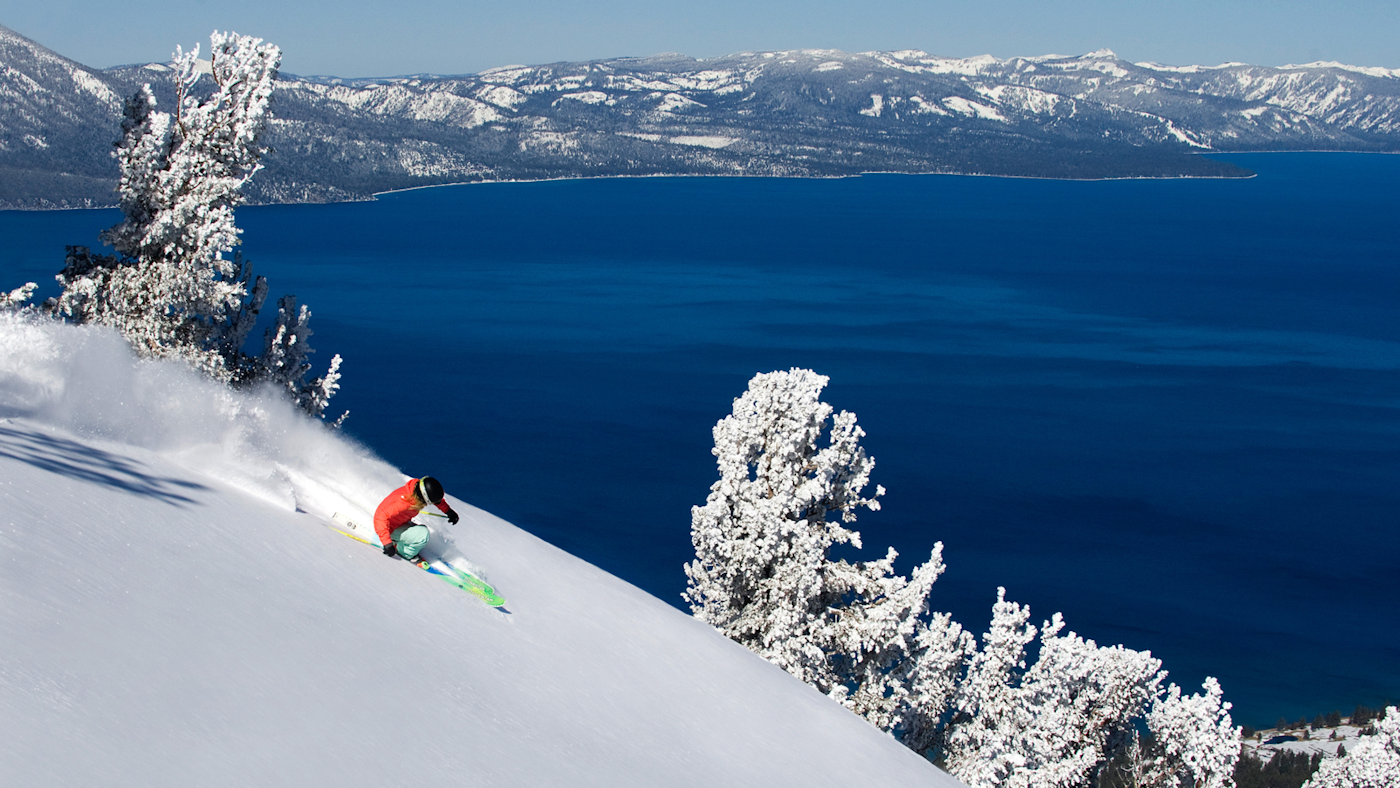
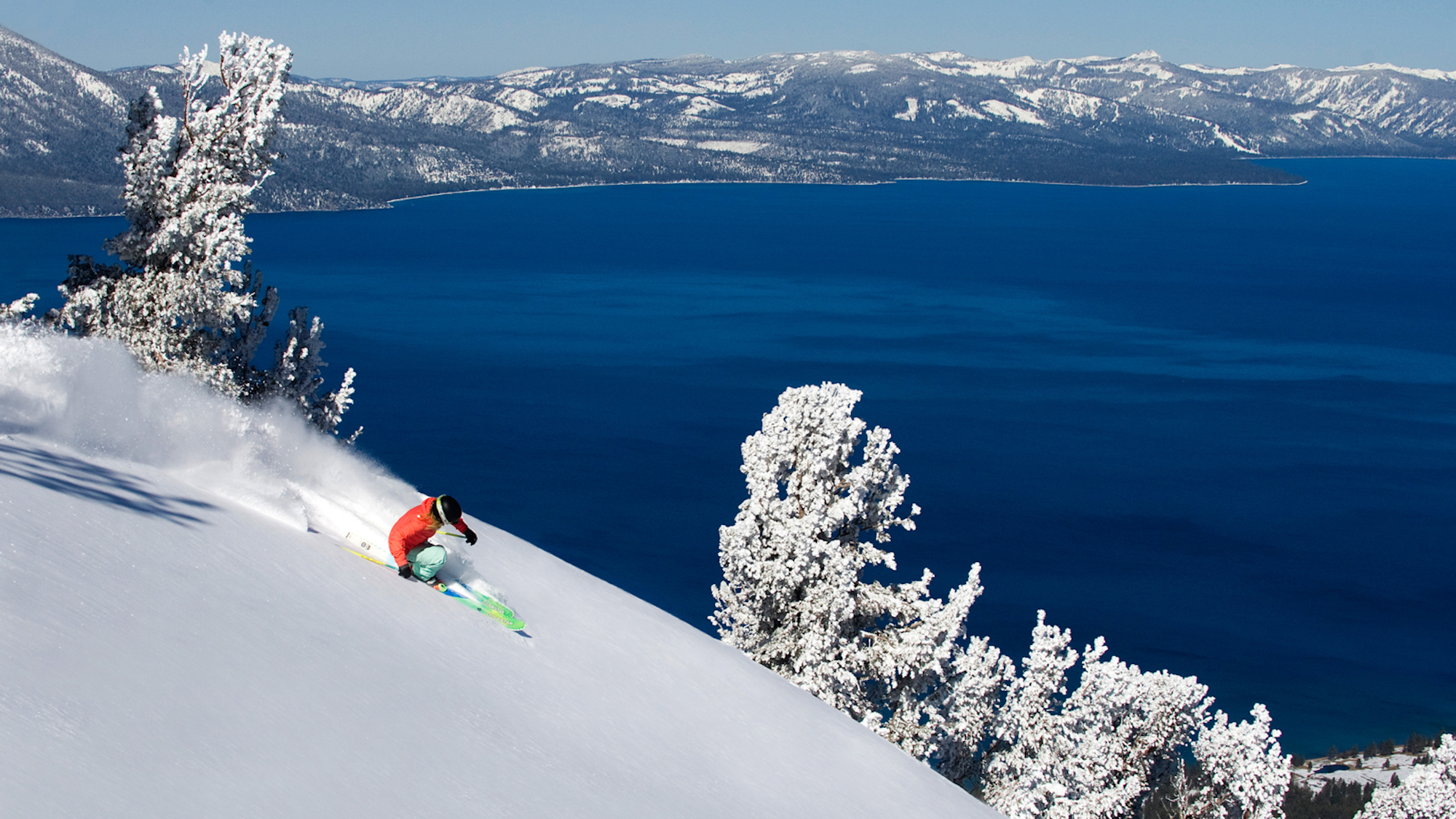
With 360 inches of average annual snowfall, chances are it’s either snowing or sunny at Heavenly. Photo by Rachid Dahnoun.
Heavenly
Heavenly’s stunning views of Lake Tahoe are reason enough to hit the resort. Straddling the border of California and Nevada, Heavenly is an hour’s drive from the Reno airport. The resort boasts 4,800 skiable acres and a vertical drop of just over 3,500 feet. With 360 inches of average annual snowfall, chances are it’s either snowing or sunny at Heavenly.
Gunbarrel is probably the resort’s most-famous thanks to its 1,700 vertical feet of unrelenting moguls as well as its Gunbarrel 25 contest, a race to ski 25 laps on the face. If moguls ain’t your thang, better opt for one of Heavenly’s gladed chutes like Dipper Woods or off of Stagecoach. The Unbuckle Party puts a new spin on après every Monday through Saturday. Located in the Tamarack Lodge on top of the gondola, Unbuckle features half-price food and drink specials, live DJs spinning, dancing and giveaways. So unbuckle those boots and take your après game to the next level!
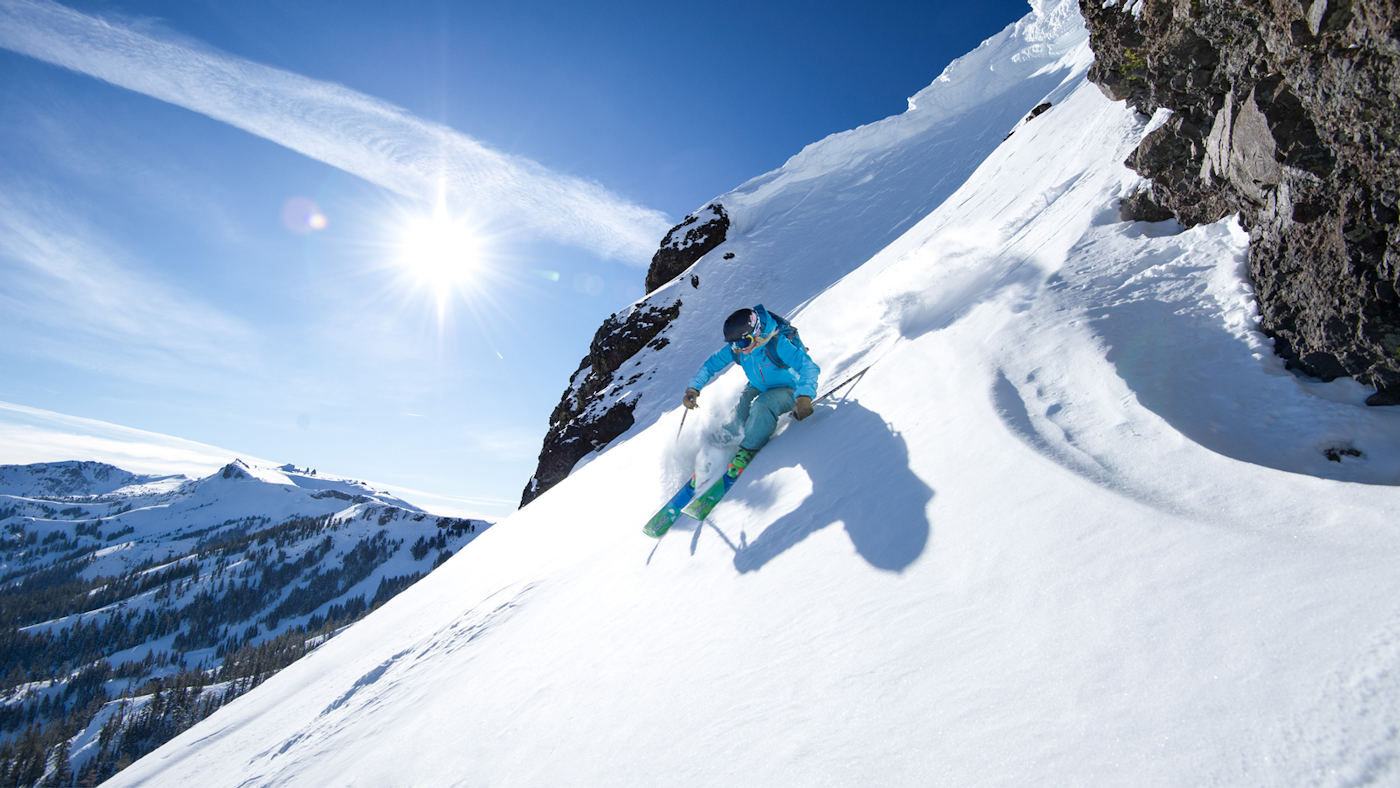
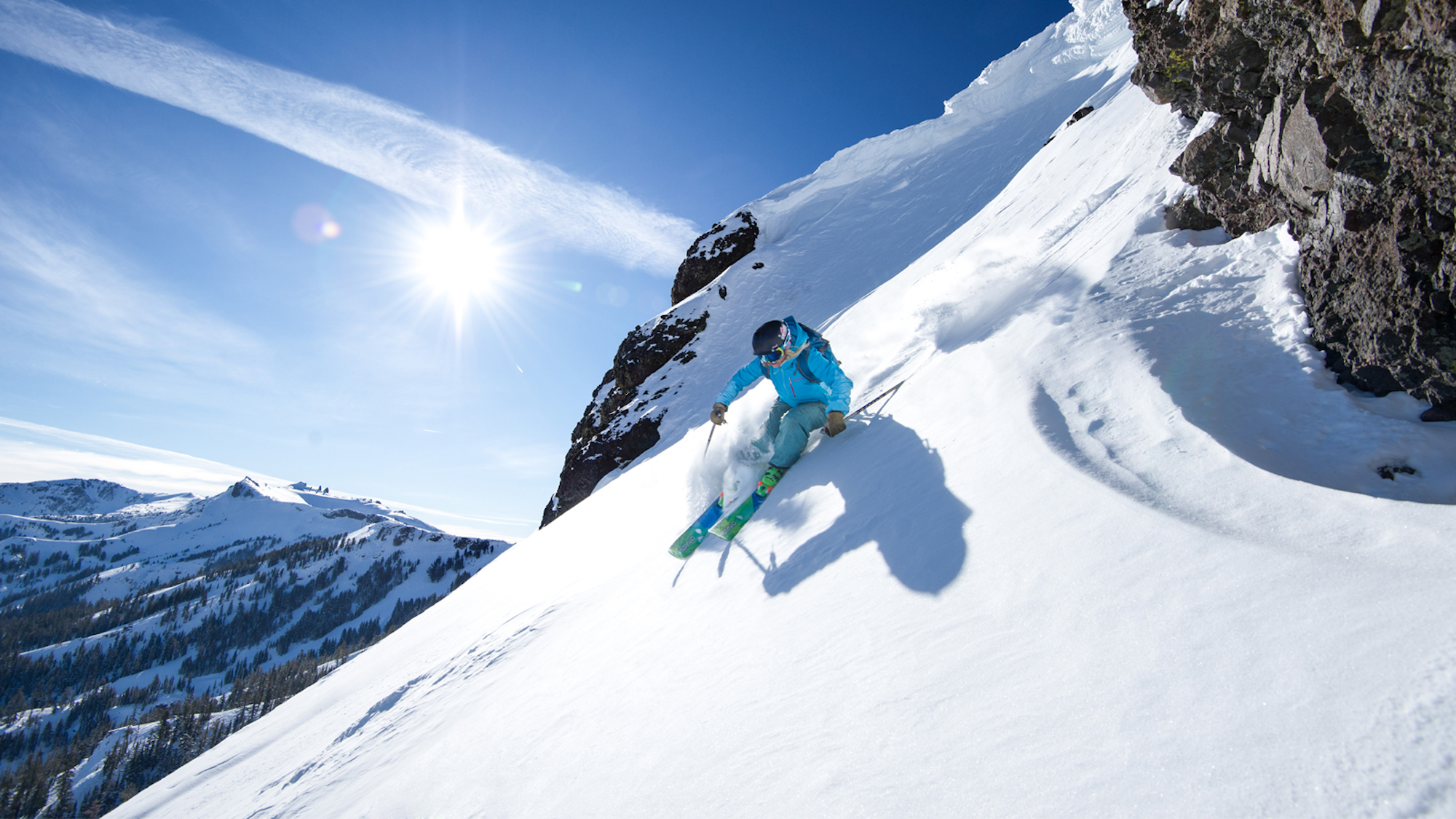
Besides its epic snowfall, Kirkwood is best known for The Wall—a double black cirque featuring steep chutes, cliffs and gullies all rolled into one expansive zone. Photo by Corey Rich.
Kirkwood
Kirkwood is a drastically different mountain from its Tahoe Epic Pass brethren: Heavenly and Northstar. It’s further inland from Lake Tahoe and doesn’t feature the nightlife that the other resorts do, but its terrain and sheer amount of average snowfall is incredible.
Kirkwood has a vertical drop of 2,000 feet and its terrain is spread across 2,300 skiable acres. While those stats don’t seem extraordinary, it is the mountain’s 600-plus inches of annual snowfall that sets it apart. Besides its epic snowfall, Kirkwood is best known for The Wall—a double black cirque featuring steep chutes, cliffs and gullies all rolled into one expansive zone. Devil’s Corral, the terrain to the right of the T Bar, is pucker-worthy, as well.
Post-skiing you can rub elbows with the locals at après spots like The Wall Bar, Cornice Cocina and the Kirkwood Inn & Saloon.
Northstar
Northstar California Resort sits on the north shore of Lake Tahoe encompassing Mount Pluto, the extinct volcano that formed the lake, and a full-fledged village with all the trimmings.
Northstar has 3,170 skiable acres of mostly below treeline terrain. The mountain averages about 350 inches of snowfall each year, and fresh tracks can regularly be found in the trees days after a storm. If trees are your jam, then the Backside Express is where you want to be. Check out Monument Glade and Sierra Grande. Northstar is also well-known for its park scene, with eight separate zones dedicated to jibbers, pipe shredders, big-jump enthusiasts, etc.
The Cabana Bar and its signature Dirty Snowman cocktail is the place to be once your day ends. A combination of hot cocoa, vanilla-infused vodka, Irish cream and hazelnut liqueur is sure to warm you up.
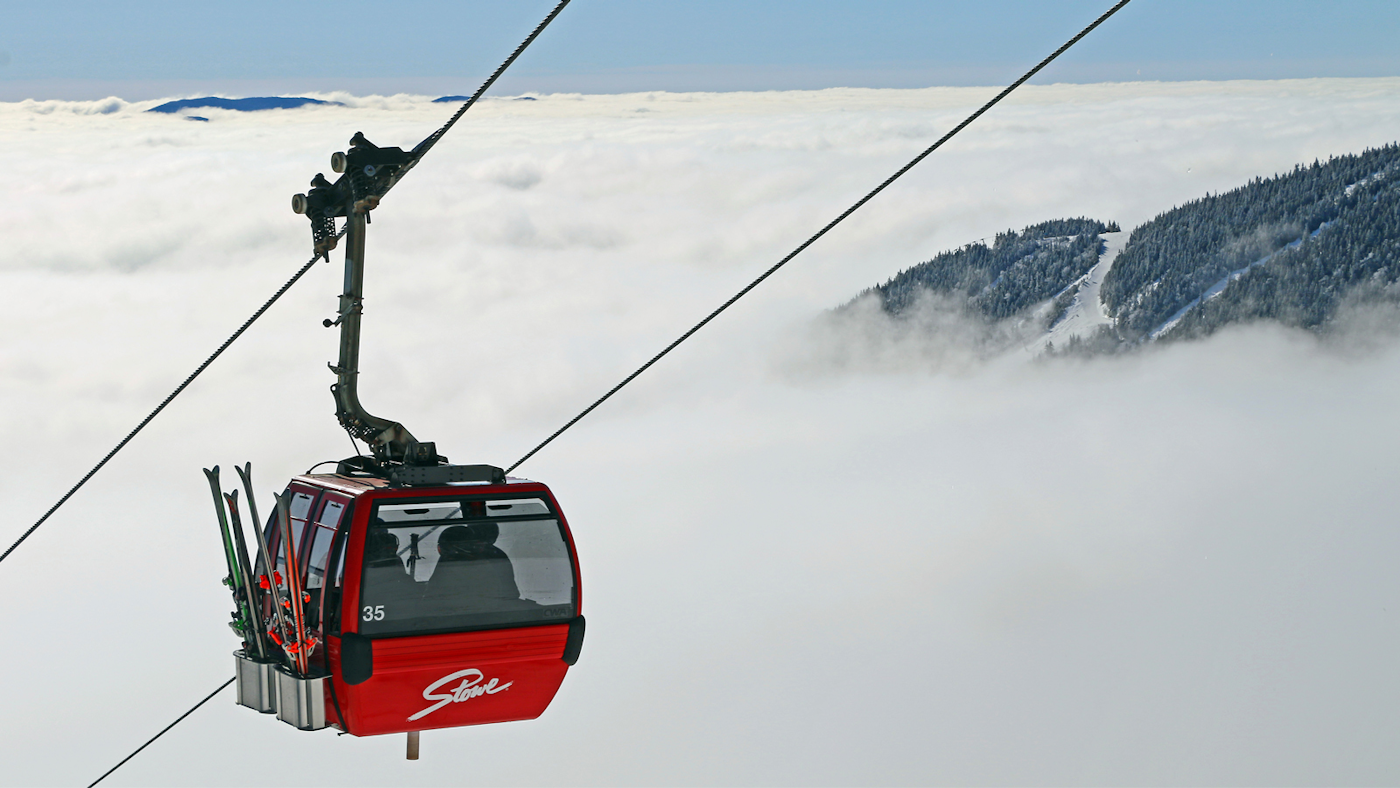
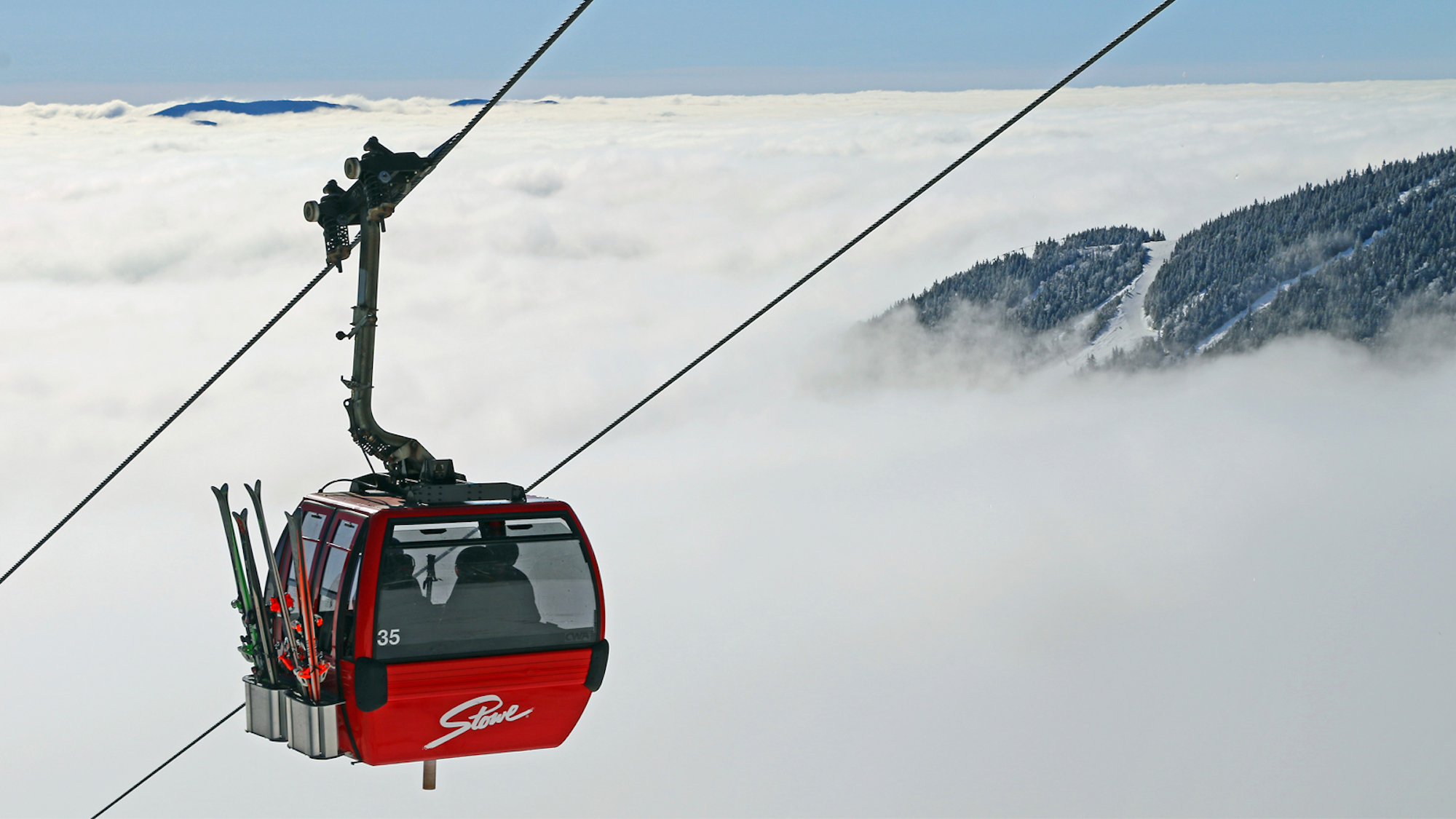
Stowe is perched on Vermont’s highest peak—Mt. Mansfield—and features the quintessential New England ski town charm a few short miles down the road from the mountain. Photo by Scott Braaten.
Stowe Mountain Resort—NEW for 2017-2018
Stowe Mountain Resort boasts steeps and big-mountain skiing that very few East Coast mountains can rival. The resort is perched on Vermont’s highest peak—Mt. Mansfield—and features the quintessential New England ski town charm a few short miles down the road from the mountain.
Boasting over 300 inches of annual snowfall, 485 skiable acres and a vertical drop of 2,360 feet, Stowe has to be in the running for the top resort in the East. When it comes to terrain, it offers great top to bottom cruisers, bumps, glades and steeps. For a test to your quads, hit the Front Four (Goat, Starr, Liftline, National) for a steep combination of groomers, bumps and glades. On a powder day head under the Gondola and hit Waterfall—a steep chute with a nice drop off a frozen waterfall for the high fliers—or dip and dodge through Stowe’s world class tree runs like Lookout, Tres Amigos and Nosedive.
The Matterhorn—located a quick drive down the access road—is the top après destination near the resort, but if you’re looking for something truly unique, check out the Bierhall at the Trapp Family Lodge. Austrian classics like bratwursts and schnitzel compliment fresh beer from the von Trapp Brewery.
Wilmot Mountain
Wilmot Mountain is a top destination for both Milwaukee and Chicago skiers. Since Vail purchased the area in 2016, the mountain has gone through an intense transformation with new lifts, an expanded base area and enhanced terrain parks.
The new Rope and Gully Terrain Parks feature longer rail jumps, stair sets and constantly evolving innovative features. Plus, an all-new dedicated children’s ski and snowboard learning center makes it even easier to develop your skills before taking them to the parks.
Mt. Brighton
Mt. Brighton located in Brighton, Michigan caters to the Detroit ski community. Once dubbed the “Snowmaking Capital of the World,” Mt. Brighton features 24 runs, 5 chair lifts and 7 surface lifts. With a total of four terrain parks located on both the frontside and backside of the mountain, there are jumps and features for nearly every level.
Afton Alps
Just a short drive from the Twin Cities, Afton Alps is one of the Midwest’s premier ski destinations. Nearly 51 trails, 17 lifts and four terrain parks are spread over 300 acres of skiable terrain.
The Landing Zone Terrain Park is the spot to practice your craft and get ready to graduate to the bigger parks of Breckenridge, Keystone and Northstar.
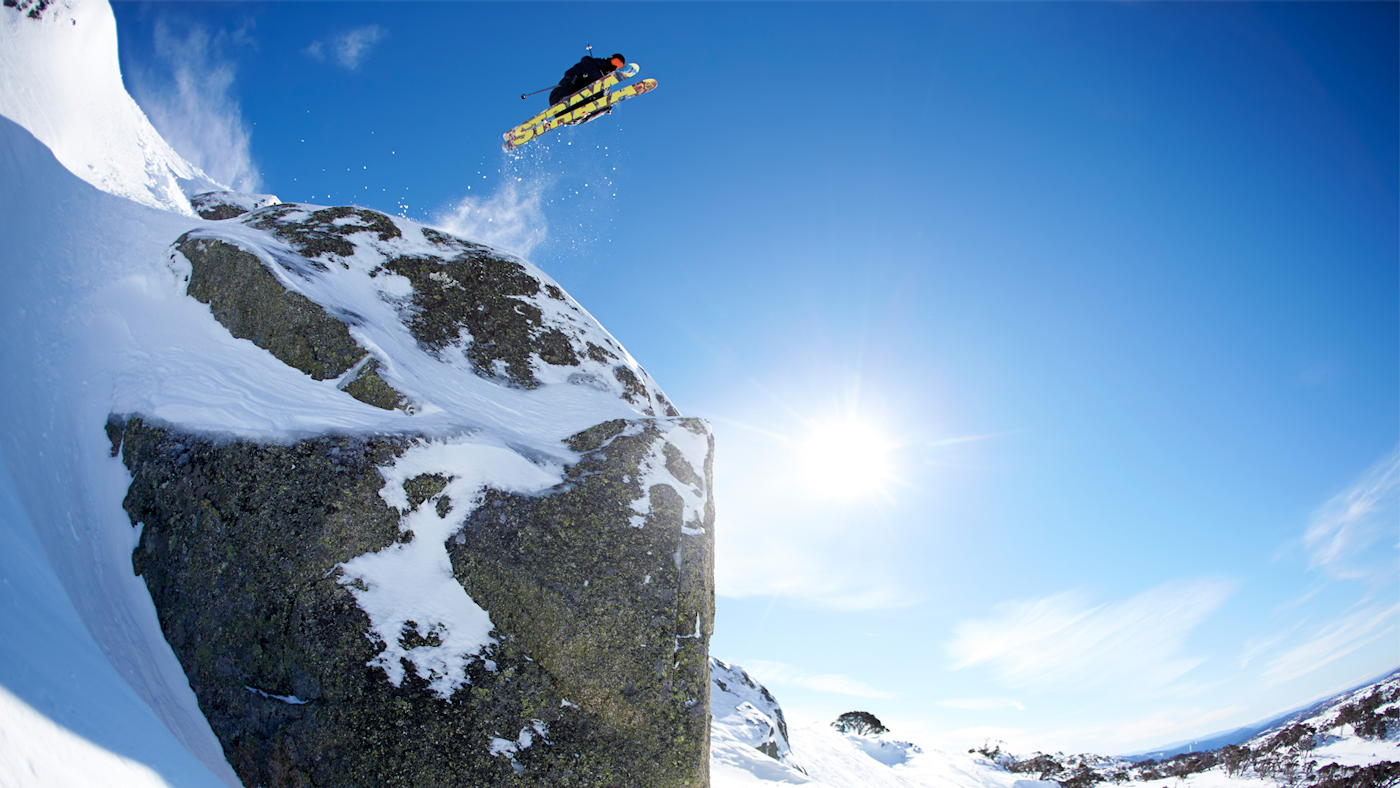
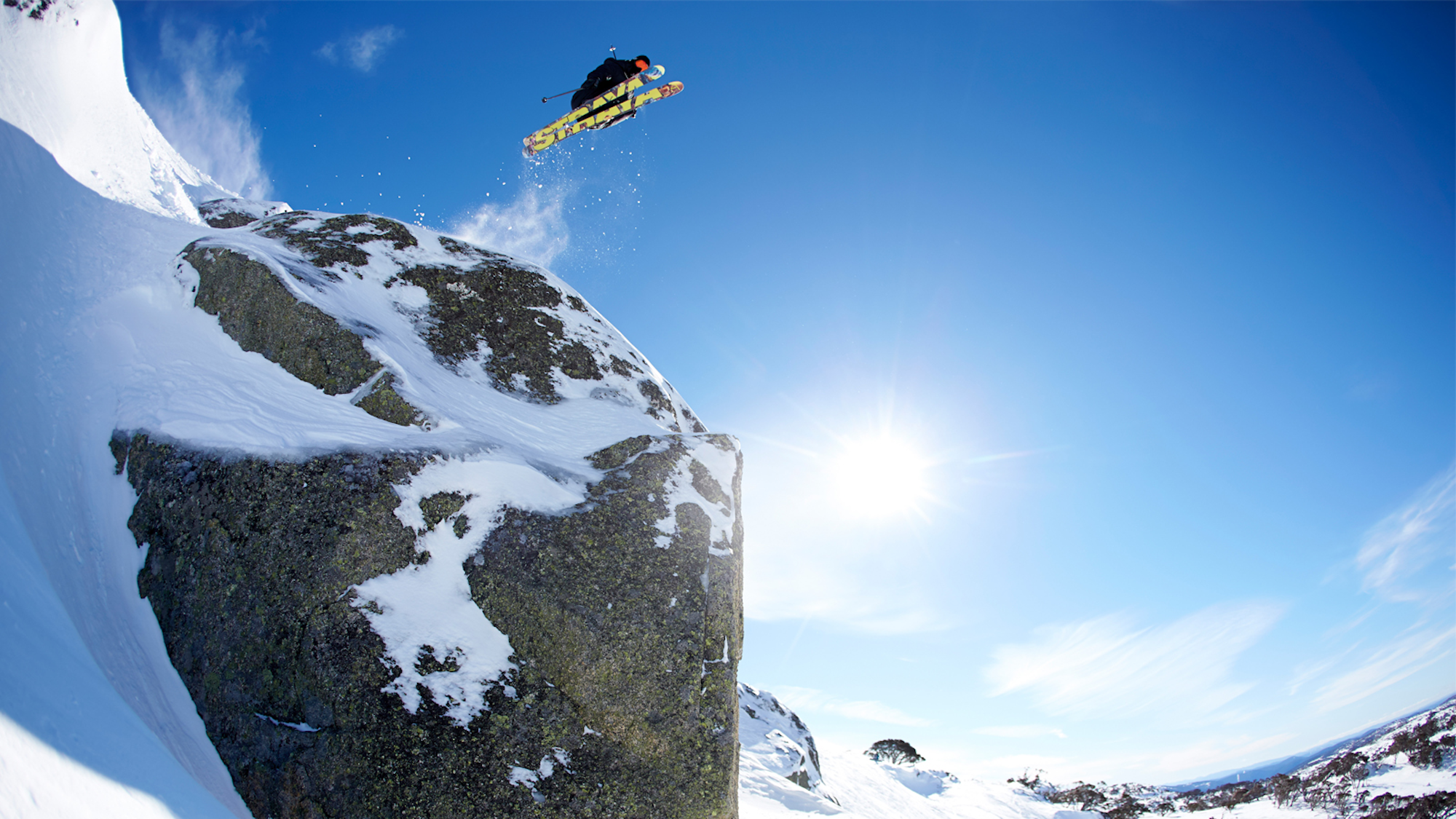
Australia’s Perisher is the largest ski resort in the Southern Hemisphere with a ski season that runs from June into October. Photo courtesy of Perisher Resort.
Perisher
Australia’s Perisher is the largest ski resort in the Southern Hemisphere with a ski season that runs from from June into October. The resort features four distinct villages spread over five square miles.
Perisher boasts over 3,000 skiable acres and a vertical drop of 1,165 feet. Several pros—Olympian Russ Henshaw, for example—call Perisher home each summer thanks to the draw of the PlayStation Slopestyle Terrain Park. This park features some of the biggest airs and longest rails south of the equator.
Arapahoe Basin
While Arapahoe Basin isn’t owned by Vail Resorts, it is part of the Epic Pass through a partnership deal. A-Basin has much more of a throwback feel than the other Colorado mountains on the Epic Pass—no lodging, minor amenities and big terrain. The mountain is growing, too—this year A-Basin will take its first steps toward a 468-acre expansion.
“The Legend” is spread over nearly 1,000 skiable acres with a vertical drop of 2,270 feet. The Pallavicini lift is the best place to find the steep and deep terrain—check out Pali Cornice and The Spine. For those that love the feel of squirming down tight chutes, the East Wall hike-to terrain is known as some of the most challenging in the state.
Après goes off at “The Beach”—the first row of reserved parking spots facing both the Pallavicini and Black Mountain Express lifts. If you prefer to après indoors, check out the bacon bloodies at 6th Alley Bar and Grill.
Branded content: This article was crafted by FREESKIER’s editors in collaboration with representatives of Vail Resorts and Epic Pass. To learn more, head to the Epic Pass website.

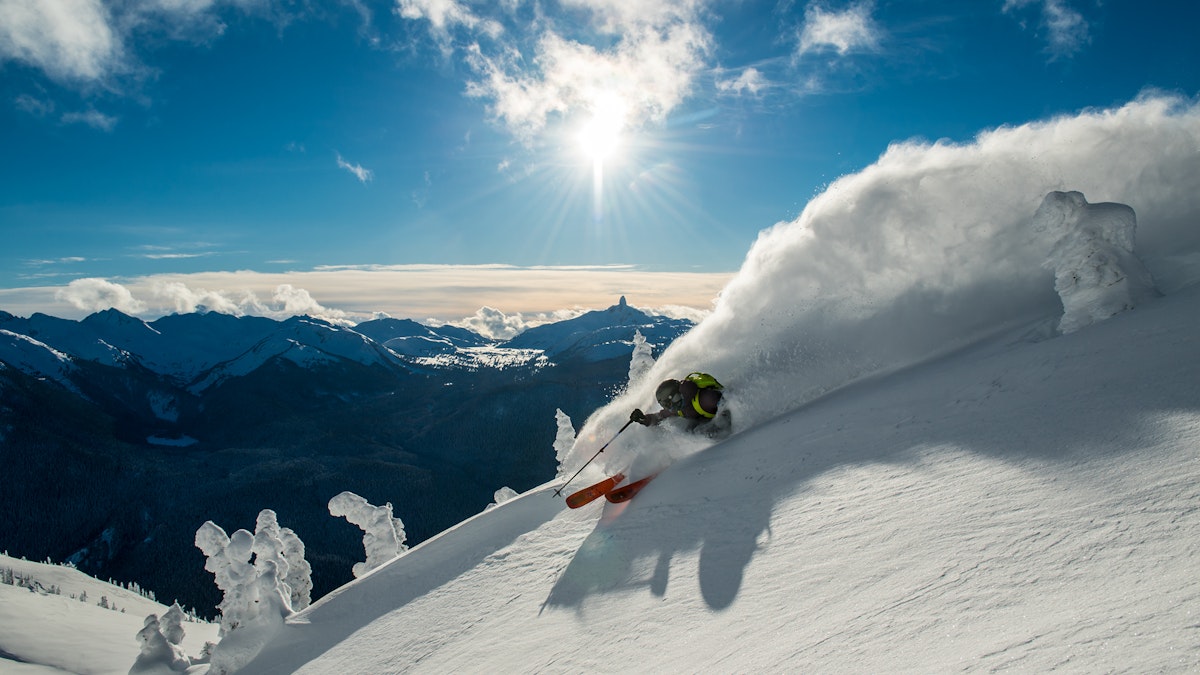
![[GIVEAWAY] Win a Legendary Ski Trip with Icelantic's Road to the Rocks](https://www.datocms-assets.com/163516/1765233064-r2r26_freeskier_leaderboard1.jpg?w=200&h=200&fit=crop)
![[GIVEAWAY] Win a Head-to-Toe Ski Setup from IFSA](https://www.datocms-assets.com/163516/1765920344-ifsa.jpg?w=200&h=200&fit=crop)

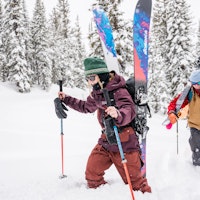
![[GIVEAWAY] Win a Legendary Ski Trip with Icelantic's Road to the Rocks](https://www.datocms-assets.com/163516/1765233064-r2r26_freeskier_leaderboard1.jpg?auto=format&w=400&h=300&fit=crop&crop=faces,entropy)


![[GIVEAWAY] Win a Head-to-Toe Ski Setup from IFSA](https://www.datocms-assets.com/163516/1765920344-ifsa.jpg?auto=format&w=400&h=300&fit=crop&crop=faces,entropy)


